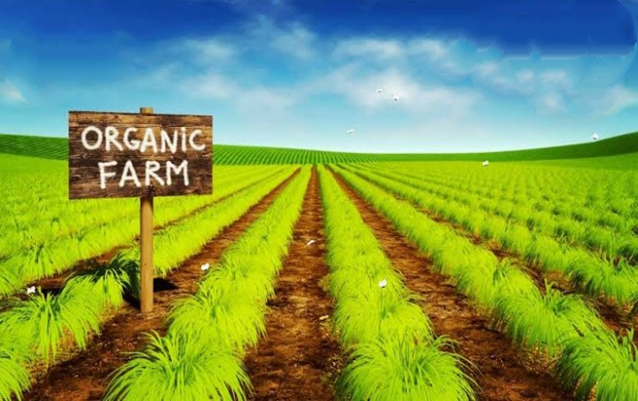
ಶಿವಮೊಗ್ಗ ಎನ್ನುವ ಯಕಶ್ಚಿತ್ ನಗರವನ್ನು ಬಿಟ್ಟು ಈಗ ಪರಿಸರವಾದಕ್ಕೆ ಮರಳೋಣ. 2012ರಲ್ಲಿ ರಾಮಚಂದ್ರ ಗುಹಾ ಪತ್ರಿಕೆಯೊಂದರಲ್ಲಿ ಚಿಪ್ಕೋ ಚಳುವಳಿಯ ಬಗ್ಗೆ ಒಂದು ಲೇಖನ ಬರೆದಿದ್ದರು. ಅದರಲ್ಲಿ ಅವರು ಸರಿಯಾಗಿ ಗುರುತಿಸಿದಂತೆ ಪಶ್ಚಿಮದ ದೇಶಗಳಲ್ಲಿ ಕೂಡ ಪರಿಸರವಾದವು ಪ್ರಗತಿವಿರೋಧಿಯೆಂದೇ ಪರಿಗಣಿತವಾಗಿತ್ತು. ಡಿ.ಡಿ.ಟಿ. ಯ ವಿರುದ್ಧ ಅದ್ಭುತವಾಗಿ ‘Silent Spring’ ಕೃತಿಯನ್ನು ಬರೆದ ರೇಚಲ್ ಕಾರ್ಸ್ನ್ ಅವಳನ್ನು ಬಂಡವಾಳಶಾಹಿ ಕಂಪನಿಗಳು ಅರೆಹುಚ್ಚಿಯೆಂದು ಕರೆದವು; ಅನೇಕ ಕೋರ್ಟು ಕೇಸುಗಳಲ್ಲಿ ಕಿರುಕುಳಕೊಟ್ಟವು. ಅಲ್ಲಿಂದಾಚೆಗೆ ನಿಧಾನವಾಗಿ ಪರಿಸರಪ್ರಜ್ಞೆ ಬೆಳೆಯುತ್ತ ಬಂದಿತು. ಆದರೆ ಪಶ್ಚಿಮದ ಪರಿಸರವಾದವು ಪ್ರಾಣಿಗಳನ್ನು ಉಳಿಸುವ, ಮನುಷ್ಯವಾಸವಿಲ್ಲದ ಕಾಡುಗಳನ್ನು ಬೆಳೆಸುವುದರಲ್ಲಿ ಆಸಕ್ತಿ ಹೊಂದಿದೆ. ಭಾರತದಲ್ಲಿ ಪರಿಸರವಾದವೆಂದರೆ ಬಡ, ರೈತಾಪಿ ಮಹಿಳೆಯರು, ಆದಿವಾಸಿಗಳು ಇವರನ್ನು ಉಳಿಸುವ ಚಳುವಳಿಯಾಗಿದೆ. ಅವರ ಅಸ್ತಿತ್ವದ ಹೋರಾಟವಾಗಿದೆ. ಹೀಗಾಗಿಯೇ ತೆಹರಿ ಘರ್ವಾಲ್ನ ಮಹಿಳೆಯರು ಪ್ರಭುತ್ವವನ್ನು, ಪೋಲೀಸರನ್ನು, ಕ್ರಿಮಿನಲ್ ಕಂಟ್ರಾಕ್ಟುದಾರರನ್ನು ದಶಕಗಳವರೆಗೆ ಎದುರಿಸಿ ಹೋರಾಡಿದರು. ಪರಿಸರ ವಿನಾಶದ ಬಲಿಪಶುಗಳು ಅವರಾಗಿದ್ದರಿಂದ ಅವರಿಗೆ ವಿಜ್ಞಾನದ ಬೆಂಬಲವೂ ಬೇಕಾಗಿರಲಿಲ್ಲ. ಸಮುದಾಯದ ಹಾಡುಗಳು, ಕತೆಗಳು, ದಿನನಿತ್ಯದ ಕೆಲಸಗಳು, ಬದುಕು ಇವುಗಳೇ ಸಾಕಿತ್ತು. ಉತ್ತರಖಂಡದ ಸ್ವರ್ಗಸಮಾನ ಪರಿಸರದ ಅನೇಕ ಪ್ರಾಂತಗಳು ಅತ್ಯಂತ ಸೂಕ್ಷ್ಮವೂ ಹೌದು. ಭೂಕುಸಿತ, ಭೂಕಂಪ ಇವುಗಳ ಅಪಾಯವು ಯಾವಾಗಲೂ ಇದ್ದದ್ದೆ. ಇಂಥ ಪರಿಸರದಲ್ಲಿ ಎರಡು ಭೀಕರ ವಿದ್ಯಮಾನಗಳು ಅವರಿಗೆ ಎದುರಾದವು. ಒಂದು ಗಣಿಗಾರಿಕೆ, ಇನ್ನೊಂದು ಜಗತ್ತಿನ ಎರಡನೇ ಅತಿ ಎತ್ತರದ ಜಲಾಶಯವನ್ನು ಕಟ್ಟುವ ತೆಹರಿ ಯೋೀಜನೆ. ಗಣಿಗಾರಿಕೆ ಮತ್ತು ಬೃಹತ್ ಅಣೆಕಟ್ಟುಗಳಿಲ್ಲದಿದ್ದರೆ ಅಭಿವೃದ್ಧಿ ಹೇಗೆ ಸಾಧ್ಯ? ಕೊನೇ ಪಕ್ಷ ಜವಾಹರಲಾಲ್ ನೆಹರು ಅವರಿಗೆ ಅವು “ಆಧುನಿಕ ದೇವಾಲಯಗಳಾಗಿ” ಕಂಡಿದ್ದವು. ನಂತರದ ಸರಕಾರಗಳಿಗೆ ಅವು ಸ್ಥಳೀಯ ಸ್ವಿಸ್ ಬ್ಯಾಂಕ್ಗಳಾಗಿ ಕಂಡವು. ಹೀಗಾಗಿ ಭಾರತದ ರಾಜಕೀಯ ವ್ಯಕ್ತಿಗಳಿಗೆ ಗೊತ್ತಿರುವ ಏಕಮಾತ್ರ ಇಂಗ್ಲಿಷ್ ಪದವೆಂದರೆ ‘development’. ನಮ್ಮ ಕಡಿದಾಳ ಶಾಮಣ್ಣನವರ ಪ್ರಕಾರ development ಪದ ಇವರಿಗೆ ಯಾಕೆ ಇಷ್ಟು ಆಪ್ಯಾಯಮಾನವೆಂದರೆ ‘development’ ಅಂದಾಗ ಅವರಿಗೆ ಅದು “Thirty percent, Forty percent” ಎಂದು ಕೇಳುತ್ತದೆಯಂತೆ! ಇತ್ತೀಚೆಗೆ ‘Sixty percent’ ಎಂದು ಕೇಳುತ್ತಿದೆಯೆಂದು ಅನಧಿಕೃತ ವರದಿ.
ಬಹುಗುಣರ ನಾಡಿನ ಮಹಿಳೆಯರಿಗೆ ಅರ್ಥವಾಗಿದ್ದೆಂದರೆ ಗಣಿಗಾರಿಕೆ, ಅಣೆಕಟ್ಟು ಇವುಗಳಿಂದ ಜೀವನದಿಗಳು ಬತ್ತಿ ಹೋಗುತ್ತವೆ. ಕಾಡುಗಳು ಕರಗಿ ಬೋಳು ನೆಲ ಉಳಿಯುತ್ತದೆ. ಕಾಡುಗಳು, ಮರಗಳು ಹೋದರೆ ಇಲ್ಲಿಯವರೆಗೆ ಸ್ವಾವಲಂಬಿಯಾಗಿದ್ದ ಸ್ವತಂತ್ರವಾಗಿದ್ದ ಮಹಿಳೆಯರು ಭಿಕ್ಷುಕರಾಗುತ್ತಾರೆ, ಗುಲಾಮರಾಗುತ್ತಾರೆ. ಅವರ ಸರಳ ಬದುಕಿಗೆ ನದಿ, ಕಾಡು ಮರಗಳು ಬೇಕಾದದ್ದನ್ನು ಕೊಡುತ್ತಿದ್ದವು. ಅವಶ್ಯವಿದ್ದದ್ದನ್ನು ಮಾತ್ರ ಬೆಳೆಯುತ್ತಿದ್ದರು. ಅವರು ಶ್ರಮಜೀವಿಗಳೂ ಹೌದು. ಸ್ವಾಭಿಮಾನಿ ಸ್ವತಂತ್ರ ವ್ಯಕ್ತಿಗಳೂ ಹೌದು. ಹೀಗಾಗಿ ಅವರು ಅಪ್ಪಿಕೋ ಚಳುವಳಿಯ ನಿಜವಾದ ನೇತಾರರಾದರು… ಮರಕಡಿಯಲು ಬರುತ್ತಿದ್ದ ಲಾರಿಗಳನ್ನು ತಡೆಯಲು ಅವುಗಳ ಎದುರಿಗೆ ನಿಲ್ಲುತ್ತಿದ್ದರು. ಕಂಟ್ರಾಕ್ಟುದಾರರ ಗೂಂಡಾಗಳು ಕಲ್ಲು, ಬಡಿಗೆಗಳಿಂದ ಹೊಡೆದರೂ ಸಹಿಸಿಕೊಳ್ಳುತ್ತಿದ್ದರು. ಮರಗಳನ್ನು ಅಪ್ಪಿಕೊಂಡು ನಿಲ್ಲುತ್ತಿದ್ದರು. ಇವರು ಸುಂದರಲಾಲ್ ಬಹುಗುಣರ ಗುರುಗಳು.
ಇಂದು ಬಂಡವಾಳಶಾಹಿ ಪ್ರೇರಿತ ಪರಿಸರ ವಿನಾಶದ ವಿರುದ್ಧ ಹೋರಾಡುತ್ತಿರುವ ಪಶ್ಚಿಮಘಟ್ಟದ ಹೋರಾಟಗಾರ್ತಿ ವಂದನಾ ಶಿವಾ ಈ ಮಹಿಳೆಯರನ್ನು ಭೇಟಿಯಾಗಿ ಅವರನ್ನು ಮಾತನಾಡಿಸುತ್ತಾರೆ. ಈ ಮಾತುಕತೆಯನ್ನು ಓದಿದ ಮೇಲೆ ಮಹಿಳೆಯರ ಬಗ್ಗೆ ಇರುವ ದಡ್ಡ ಕಲ್ಪನೆಗಳೆಲ್ಲ ಕಳಚಿಹೋಗುತ್ತವೆ. ಅವರೆದುರಿಗೆ ಗಂಡಸರೆಲ್ಲಾ “ಕ್ಯಾಬಿ ನೈ” ಆಗಿ ಕಾಣುತ್ತಾರೆ. ಪರಿಸರವಾದವು ಮಹಿಳೆಯರ ಬದುಕೇ ಆಗಿದೆ. ಅದನ್ನು ಕದ್ದು ನಾವು ಪೇಟಂಟ್ ಮಾಡಿಕೊಂಡಿದ್ದೇವೆ. ಆ ಮಾತುಕತೆಯ ಕೆಲವು ಭಾಗಗಳನ್ನು ಇಲ್ಲಿ ಸಂಗ್ರಹಿಸಿದ್ದೇನೆ. ಭಾವಾನುವಾದ ಮಾತ್ರ ಮಾಡಿದ್ದೇನೆ.
“ಮಗುವಿಗೆ ಹಾಲುಕೊಟ್ಟು ಹೊರಡಬೇಕೆನ್ನುವಷ್ಟರಲ್ಲಿ ಲಾರಿಯ ಸದ್ದು ಕೇಳಿಸಿತು. ಅರೆ, ಸರಕಾರದ ಆಜ್ಞೆ ಮೀರಿ ಇದು ಹೇಗೆ ಬಂದಿತು? ಅದನ್ನು ತಡೆಯಲು ಅಲ್ಲಿ ಇದ್ದ ನಮ್ಮ ಸ್ವಯಂಸೇವಕರಿಗೇನಾಯಿತು ಎಂದು ಯೋಚಿಸಿದೆ. ಹೋಗಿ ನೋಡಿದರೆ ಅವರನ್ನು ಎತ್ತಿಕೊಂಡು ಹೋಗಿಬಿಟ್ಟಿದ್ದಾರೆ, ನಾನು ಲಾರಿಯ ಎದುರಿಗೆ ನಿಂತುಕೊಂಡು ‘ನನ್ನ ಮೇಲೆ ಹರಿದೇ ಈ ಲಾರಿ ಹೋಗಬೇಕು’ ಎಂದೆ. ಸುಮಾರು ಹೊತ್ತಿನ ಮೇಲೆ ಅದು ವಾಪಸ್ಸು ಹೊರಟು ಹೋಯಿತು”.
“ಈ ಕಂಟ್ರಾಕ್ಟುದಾರರ ಗುಜ್ರಾಲ್ ಇದ್ದಾನಲ್ಲ, ಅವನು ನಮಗೆ ಹೇಳಿದ. ನಮಗೆ ಅಡ್ಡಿಮಾಡದಿದ್ದರೆ ಇಲ್ಲಿ ನಿಮಗೆ ಆಸ್ಪತ್ರೆ ಕಟ್ಟಿಸಿಕೊಡುತ್ತೇನೆ. ಸ್ಕೂಲ್ ಕಟ್ಟಿಸಿಕೊಡುತ್ತೇನೆ ಅಂತ. ನಾವು ಹೇಳಿದೆವು ಇಪ್ಪತ್ತಾರು ವರ್ಷ ಬರದೇ ಇದ್ದ ಬುದ್ಧಿ ಈಗ ಬಂದಿದೆಯ? ಕಾಡು ಇಲ್ಲದೆ, ಬದುಕೇ ಇಲ್ಲದ ಮೇಲೆ ಆಸ್ಪತ್ರೆ ಏನಕ್ಕೆ?.”
“ನಮ್ಮ ನದಿ, ಮರಗಳು ಕಾಡುಗಳು ಇದ್ದರೆ ನಾವು ಬಡವರಲ್ಲ, ಶ್ರೀಮಂತರೇ. ನಮಗೆ ಪಟ್ಟಣಕ್ಕೆ ಬಂದು ಸಾಲಿನಲ್ಲಿ ನಿಂತು ಕೊಳ್ಳುವುದು ಏನೂ ಇಲ್ಲ. ನಮ್ಮ ಕಾಡು, ನದಿ, ನಮ್ಮ ಸ್ವಾತಂತ್ರ್ಯ ಇವು ಮೂರೇ ನಮಗೆ ಸಾಕು”. ಅವಳ ಮಗ ಹೇಳಿದ್ದು “ಕಂಟ್ರಾಕ್ಟುದಾರ ನನಗೆ 5 ಲಕ್ಷ ದುಡ್ಡು ಕೊಡಲು ಬಂದ. ಇದನ್ನು ತಗೋ. ನಿನ್ನ ತಾಯಿ ಚಳುವಳಿಯನ್ನು ಬಿಡುವಂತೆ ಮಾಡು ಇದೇನು ಕಡಿಮೆ ದುಡ್ಡಲ್ಲ”. ನಾನು ಹೇಳಿದೆ, “ಬೇಡ ದುಡಿದರೆ ದುಡ್ಡು ಬಂದೀತು. ನನ್ನ ತಾಯಿಯ ಮರ್ಯಾದೆ, ಘನತೆ ಹೋದರೆ ನಮ್ಮ ಸಮುದಾಯದಲ್ಲಿ ಬದುಕೋಕೆ ಆಗುತ್ತಾ”.
ವಂದನಾ ಶಿವ ಆ ಮಹಿಳೆಯರನ್ನು ಕೇಳುತ್ತಾರೆ- “ನಿಮಗೆ ಈ ಶಕ್ತಿ ಎಲ್ಲಿಂದ ಬರುತ್ತದೆ?”
ಉತ್ತರ ಹೀಗಿದೆ,
“ನಮಗೆ ಶಕ್ತಿ ಈ ಕಾಡುಗಳಿಂದ, ಹಲ್ಲುಗಾವಲುಗಳಿಂದ ಬರುತ್ತದೆ. ಅವು ತಮ್ಮ ಆಂತರಿಕ ಶಕ್ತಿಯಿಂದ ವರ್ಷದಿಂದ ವರ್ಷಕ್ಕೆ ಬೆಳೆಯುವುದನ್ನು ನೋಡಿದ್ದೇವೆ. ನಮ್ಮ ಈ ನೀರ ಧಾರೆಗಳು ಮತ್ತೆ ಮತ್ತೆ ಹೊಸದಾಗಿ ಜೀವ ಪಡೆದುಕೊಳ್ಳುವುದನ್ನು ನೋಡಿದ್ದೇವೆ. ಮಿರುಗಿ ಹೊಳೆಯುವ ಅವುಗಳ ನೀರನ್ನು ಕುಡಿದು ಶಕ್ತಿಯನ್ನು ಹೀರಿಕೊಂಡಿದ್ದೇವೆ. ನಾವು ತಾಜಾ ಹಾಲನ್ನು ಕುಡಿದು, ತುಪ್ಪವನ್ನು ತಿಂದು ನಮ್ಮ ಹೊಲಗಳಲ್ಲಿ ಬೆಳೆದದ್ದನ್ನೇ ಉಣ್ಣುತ್ತೇವೆ. ಇದೆಲ್ಲ ನಮ್ಮ ದೇಹಗಳಿಗೆ ಮಾತ್ರವಲ್ಲ ಮನಸ್ಸುಗಳಿಗೂ ಶಕ್ತಿಕೊಡುತ್ತದೆ…. ನಾವು ನಮ್ಮ ಒಡೆಯರು, ಯಾರ ಗುಲಾಮರೂ ಅಲ್ಲ. ನಿಸರ್ಗದ ಶಕ್ತಿಯೇ ನಮ್ಮ ಶಕ್ತಿ. ಈ ಕಂಟ್ರಾಕ್ಟುದಾರರು ನಮ್ಮ ಮಕ್ಕಳನ್ನು ಕಲ್ಲಿನಿಂದ ಹೊಡೆದರು; ಕಬ್ಬಿಣದ ಸಲಾಕೆಗಳಿಂದ ಹೊಡೆದರು, ಆದರೆ ಅವರ ಕೈಲಿ ನಮ್ಮ ಶಕ್ತಿಯನ್ನು ನಾಶಮಾಡಲು ಆಗಲಿಲ್ಲ”.
ಆದರೆ ಈ ಮಹಿಳೆಯರಿಗೆ, ಅಲ್ಲಿಯ ಜನಸಮುದಾಯಗಳಿಗೆ ನಮ್ಮ ಎಲ್ಲಾ ಸರಕಾರಗಳು ಮೋಸ ಮಾಡಿದವು. ಸುಂದರಲಾಲ್ ಬಹುಗುಣ ಎರಡು ಸಾರಿ ಸುದೀರ್ಘ ಕಾಲದ ಉಪವಾಸ ಮಾಡಿದರು. ಇನ್ನೇನು ಅವರು ಬದುಕುವುದಿಲ್ಲವೆನ್ನುವಾಗ ಜಾರ್ಜ್ ಫರ್ನಾಂಡಿಸ್ ಪ್ರಧಾನ ಮಂತ್ರಿಗಳಿಗೆ ಬಹುಗುಣ ವಿರೋಧಿಸುತ್ತಿರುವ ಯೋಜನೆಯನ್ನು ತಾತ್ಕಾಲಿಕವಾಗಿಯಾದರೂ ನಿಲ್ಲಿಸಲು ಆದೇಶ ನೀಡಿ ಎಂದು ಕೇಳಿಕೊಳ್ಳುತ್ತಾರೆ. ಪ್ರಧಾನಿಗಳು ಅವರೆದುರಿಗೇ ಅಧಿಕಾರಿಗಳನ್ನು ಕರೆದು ಆದೇಶಗಳನ್ನು ಕೊಡುತ್ತಾರೆ. ಅವು ಬಹುಗುಣರು ಉಪವಾಸವಿದ್ದ ಸ್ಥಳಕ್ಕೆ ತಲುಪುವುದೇ ಇಲ್ಲ, ಬಹುಗುಣರ ಆರೋಗ್ಯ ವಿಚಾರಿಸಲು ಇಂದಿರಾ ಜೈಸಿಂಗ್ ಅಲ್ಲಿಗೆ ಹೋದರೆ ಬಹುಗುಣ ಮೌನವ್ರತದಲ್ಲಿರುತ್ತಾರೆ. ಆದರೆ ತಮ್ಮ ಅಭಿಪ್ರಾಯವನ್ನು ಅನೇಕ ಪುಟಗಳಲ್ಲಿ ಬರೆದುಕೊಡುತ್ತಾರೆ. ಈ ಮನುಷ್ಯನನ್ನು ಕಣ್ಣಿಗೆ ಕಾಣದ ಯಾವುದೋ ಶಕ್ತಿ ಕಾಪಾಡುತ್ತದೆ ಎಂದು ಇಂದಿರಾ ಜೈಸಿಂಗ್ ಬರೆಯುತ್ತಾರೆ. ಬಹುಗುಣರ ಗುರುಗಳಾದ ಮಹಿಳೆಯರಿಗೆ ಈ ಶಕ್ತಿ ಯಾವುದೇ ದೈವಿಕ ಪವಾಡವಾಗಿರಲಿಲ್ಲ. ಕಾಡು, ನದಿ, ಮರ ಎನ್ನುವ ಹಲವು ತಾಯಂದಿರ ಪ್ರೀತಿಯ ಕೊಡುಗೆ ಆಗಿತ್ತು.
ಈ ಲೇಖನ ಪ್ರಕಟವಾಗುವ ಹೊತ್ತಿಗೆ (5 ಜೂನ್) ಮತ್ತೆ ಪರಿಸರ ದಿನಾಚರಣೆ ಬರುತ್ತದೆ. ಇನ್ನು ಮೇಲೆ ಅದನ್ನು ಅಭಿವೃದ್ಧಿ ದಿನಾಚರಣೆಯೆಂದು ಆಚರಿಸಬೇಕೆಂದು ಮೇಲಿಂದ ಫರ್ಮಾನು ಬರಬಹುದೆ?
ಡಾ.ರಾಜೇಂದ್ರ ಚೆನ್ನಿ,
ನಿರ್ದೇಶಕರು,
‘ಮಾನಸ’ ಸಾಂಸ್ಕೃತಿಕ ಅಧ್ಯಯನ ಕೇಂದ್ರ. ಶಿವಮೊಗ್ಗ.








